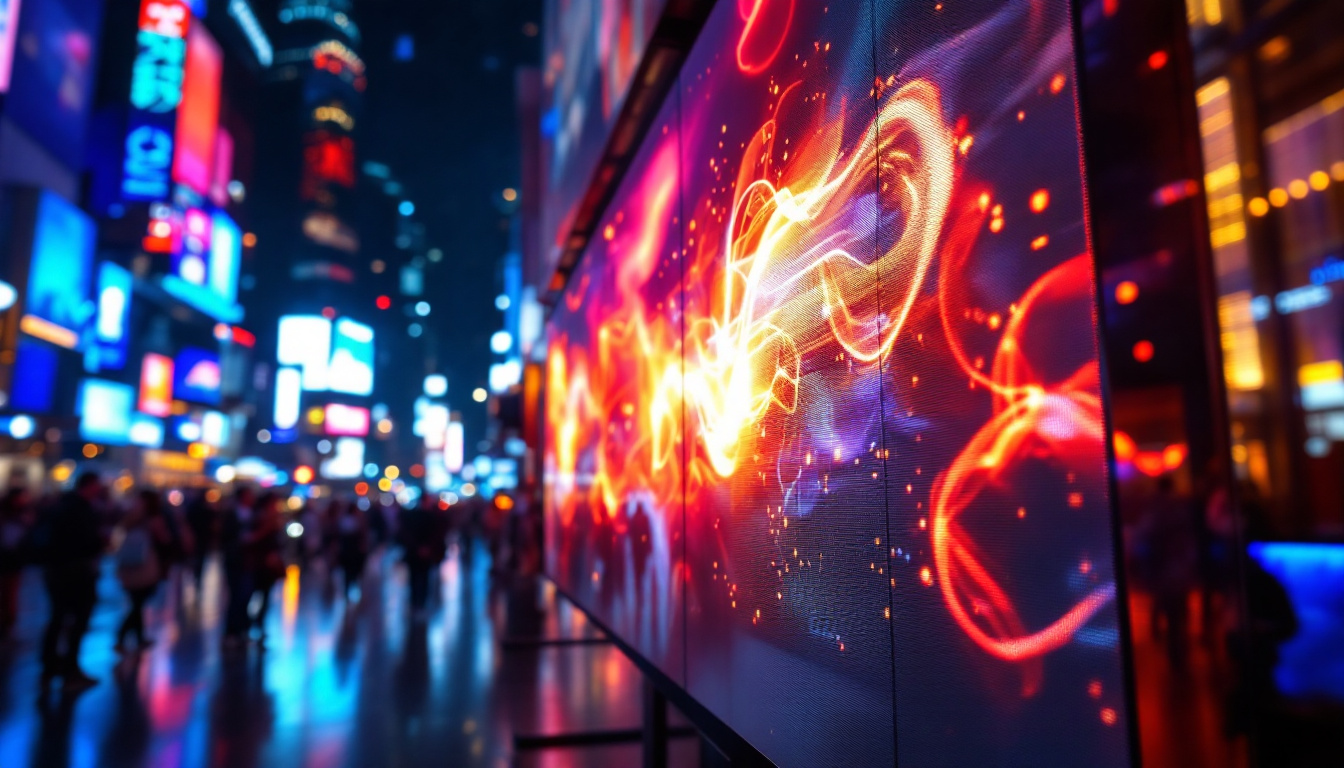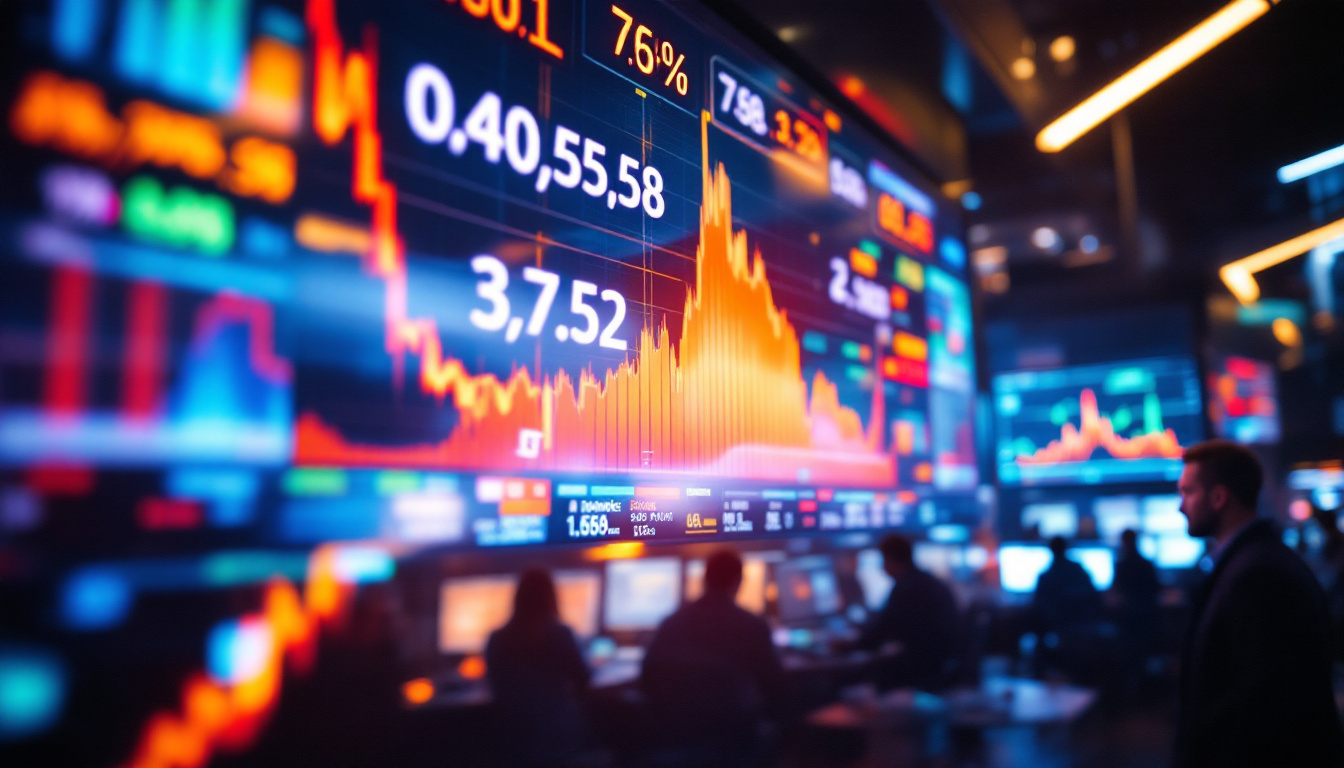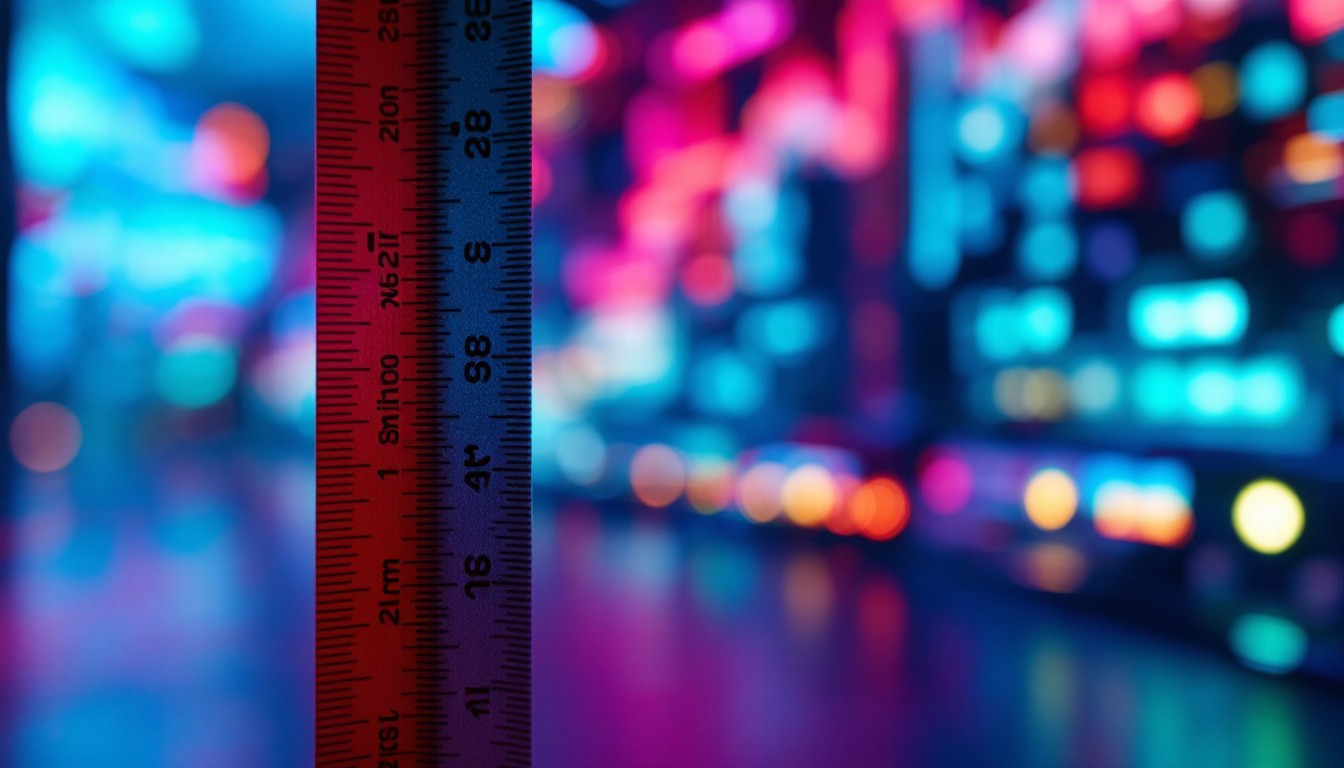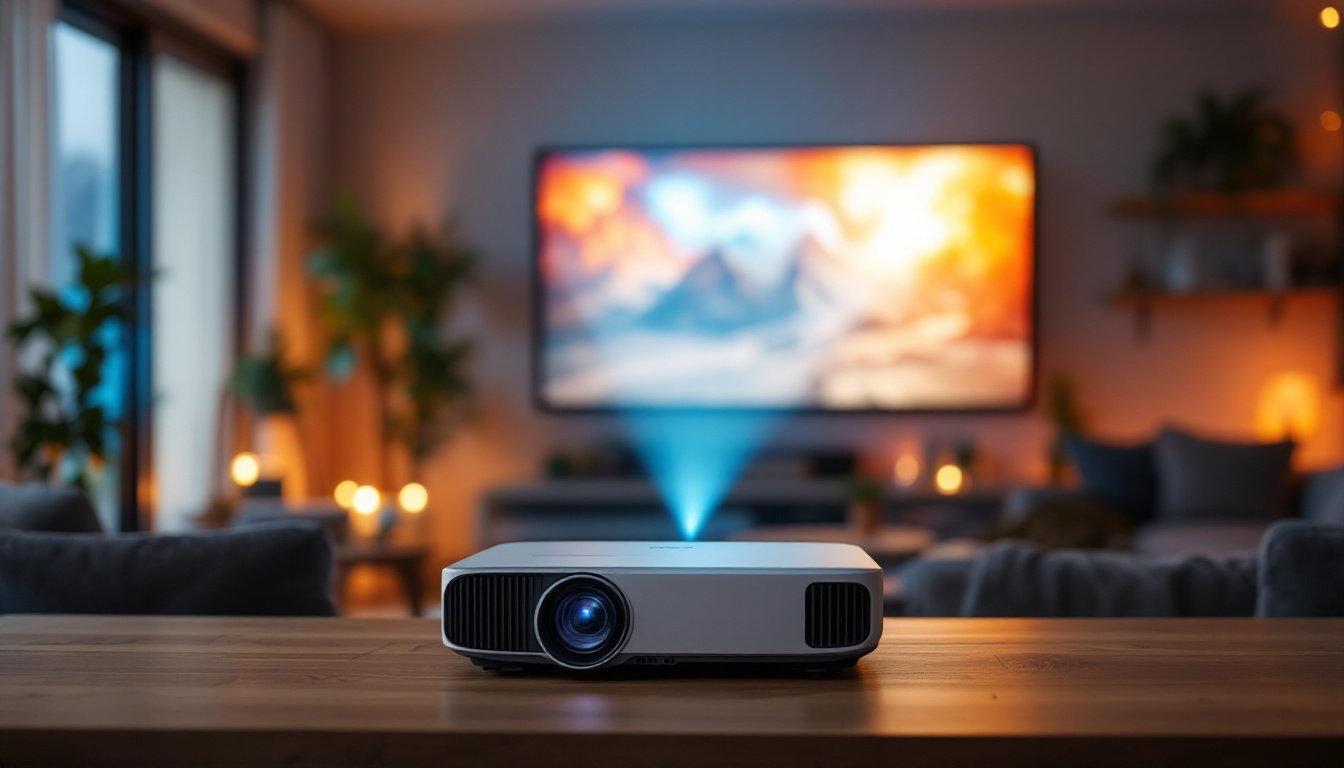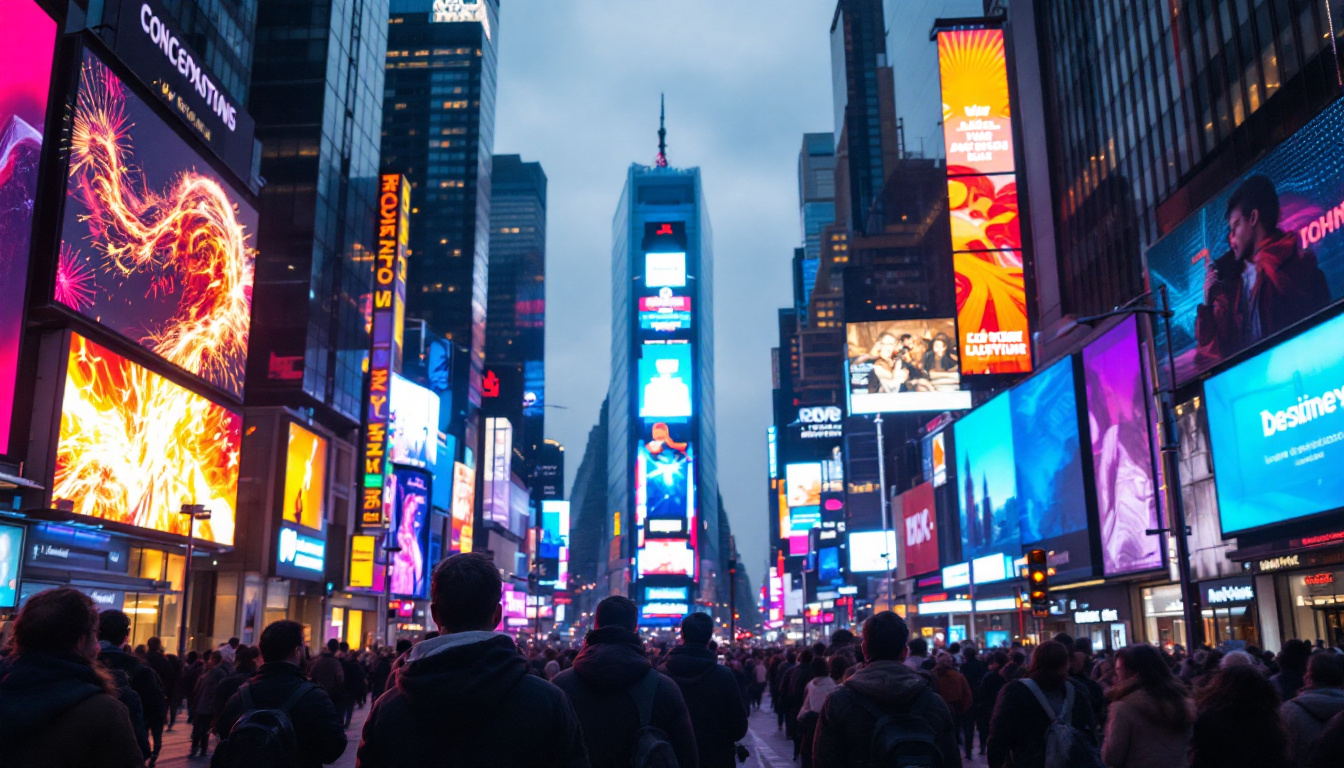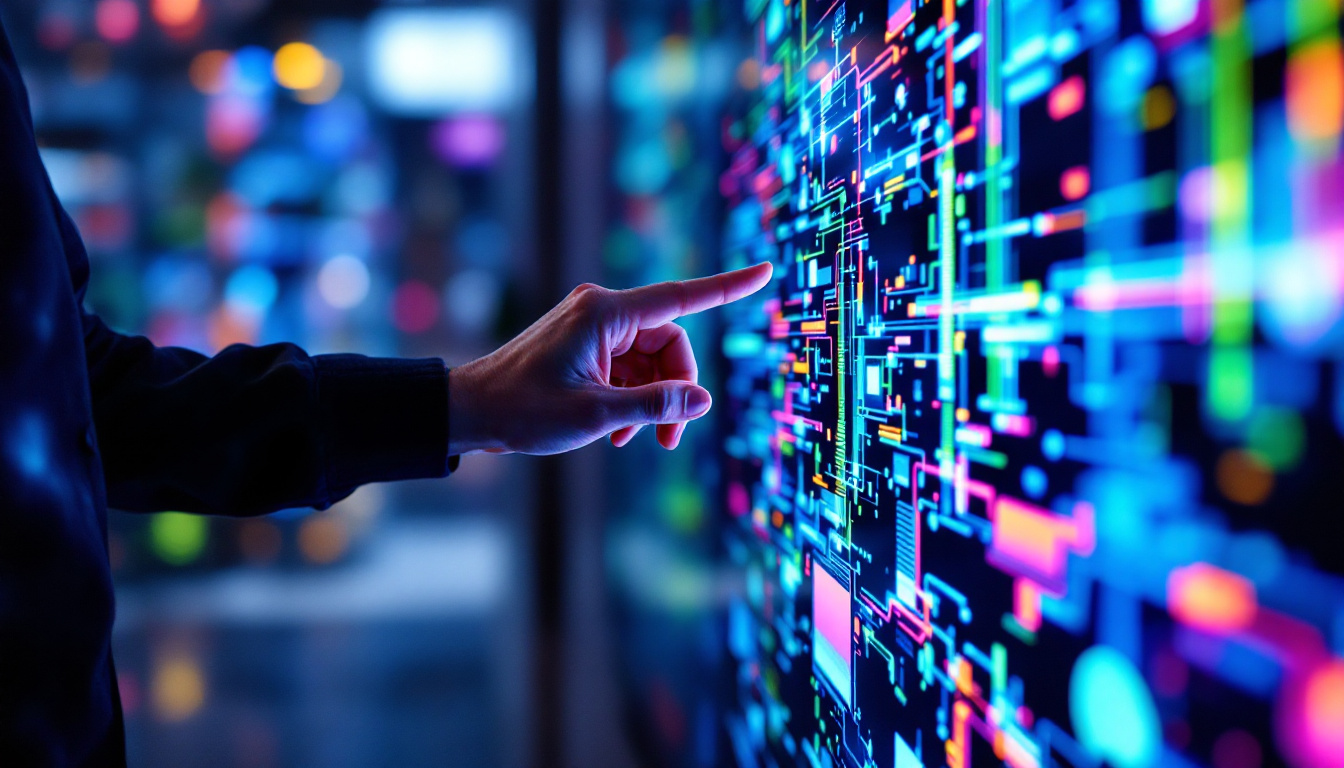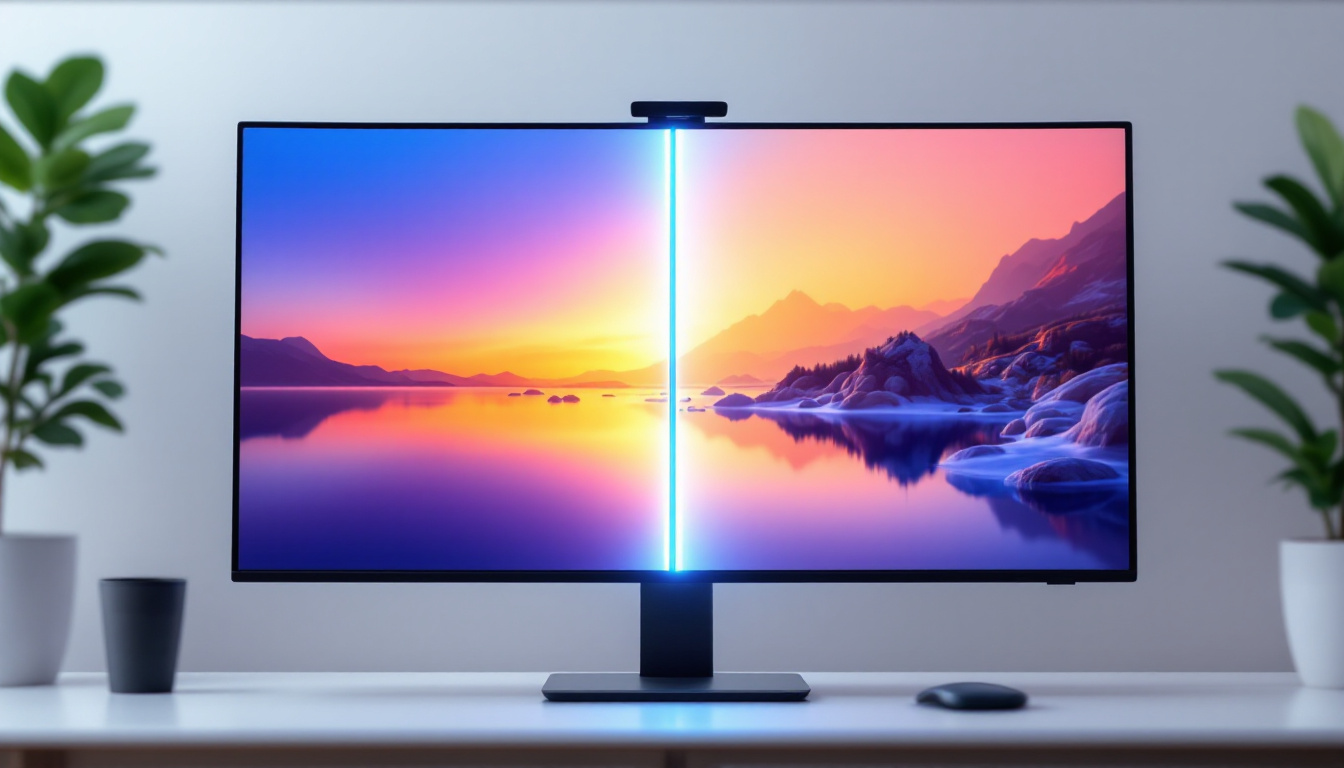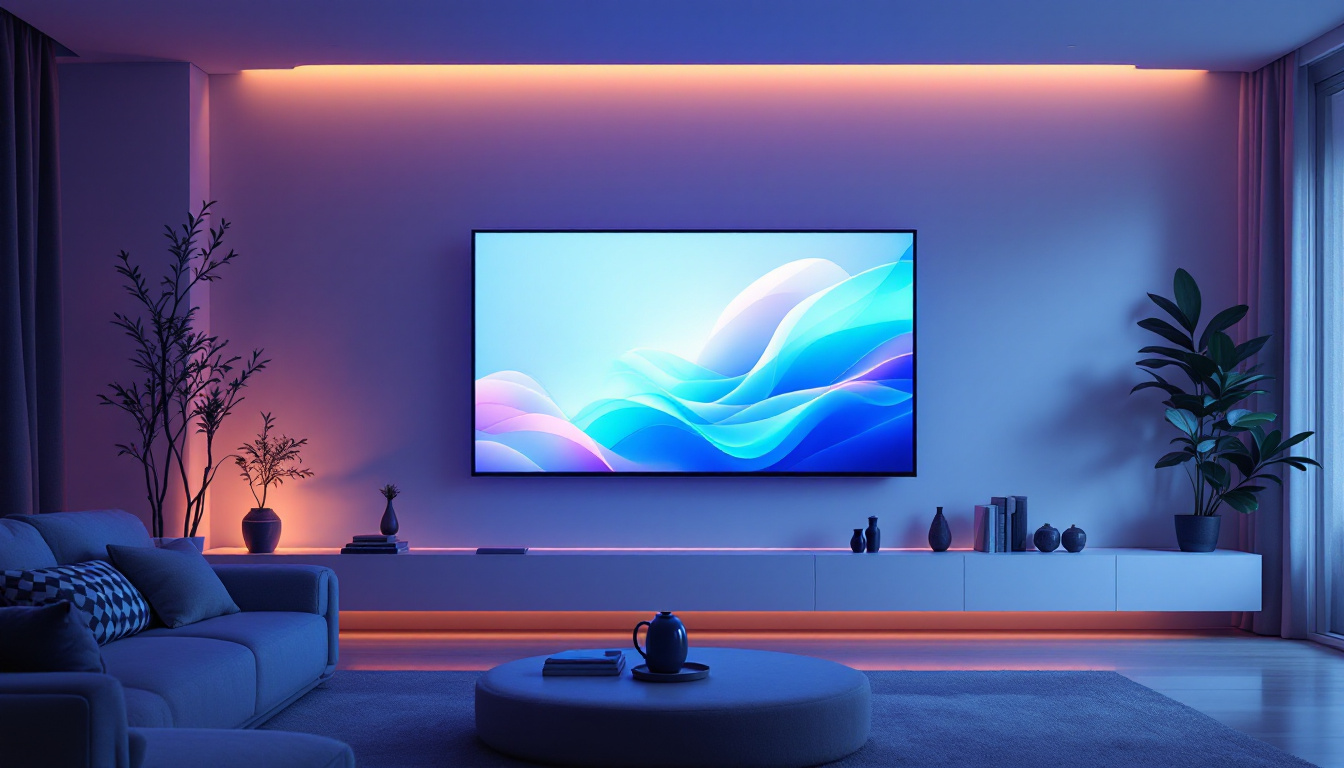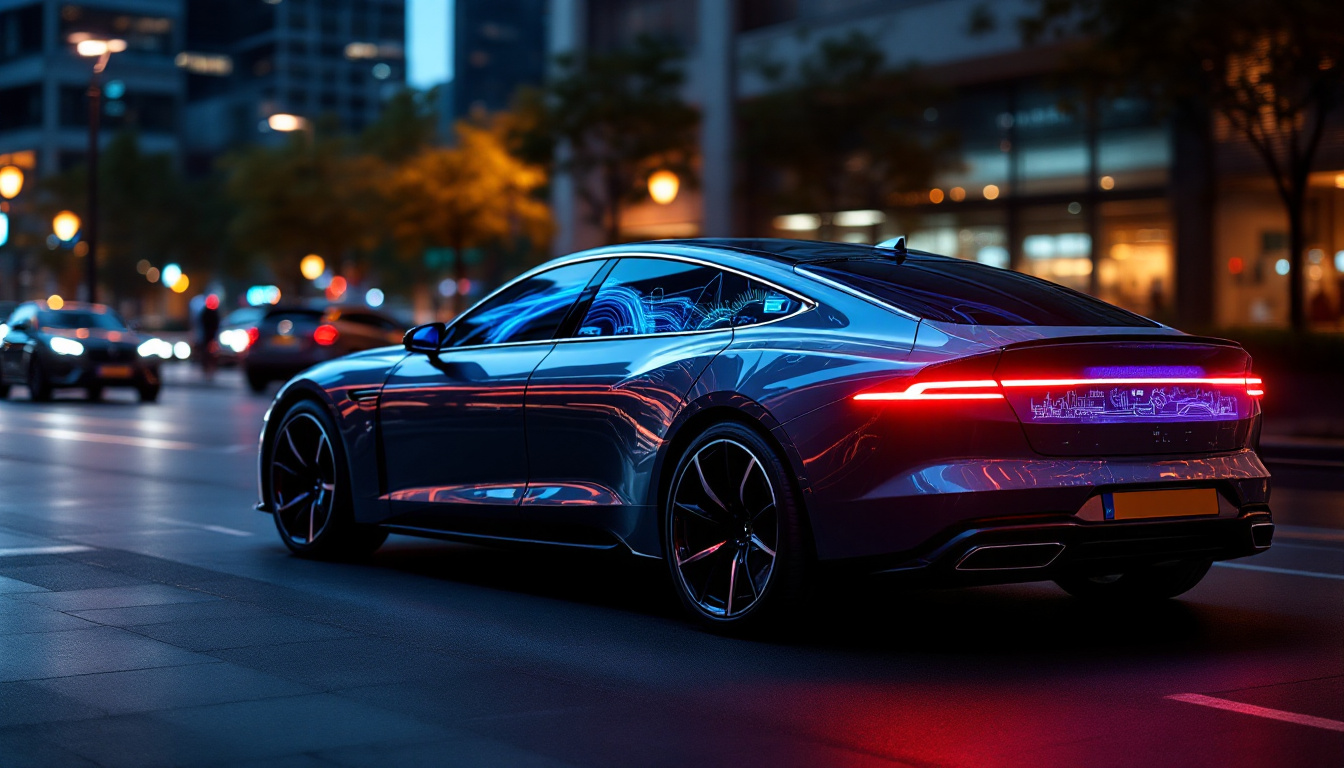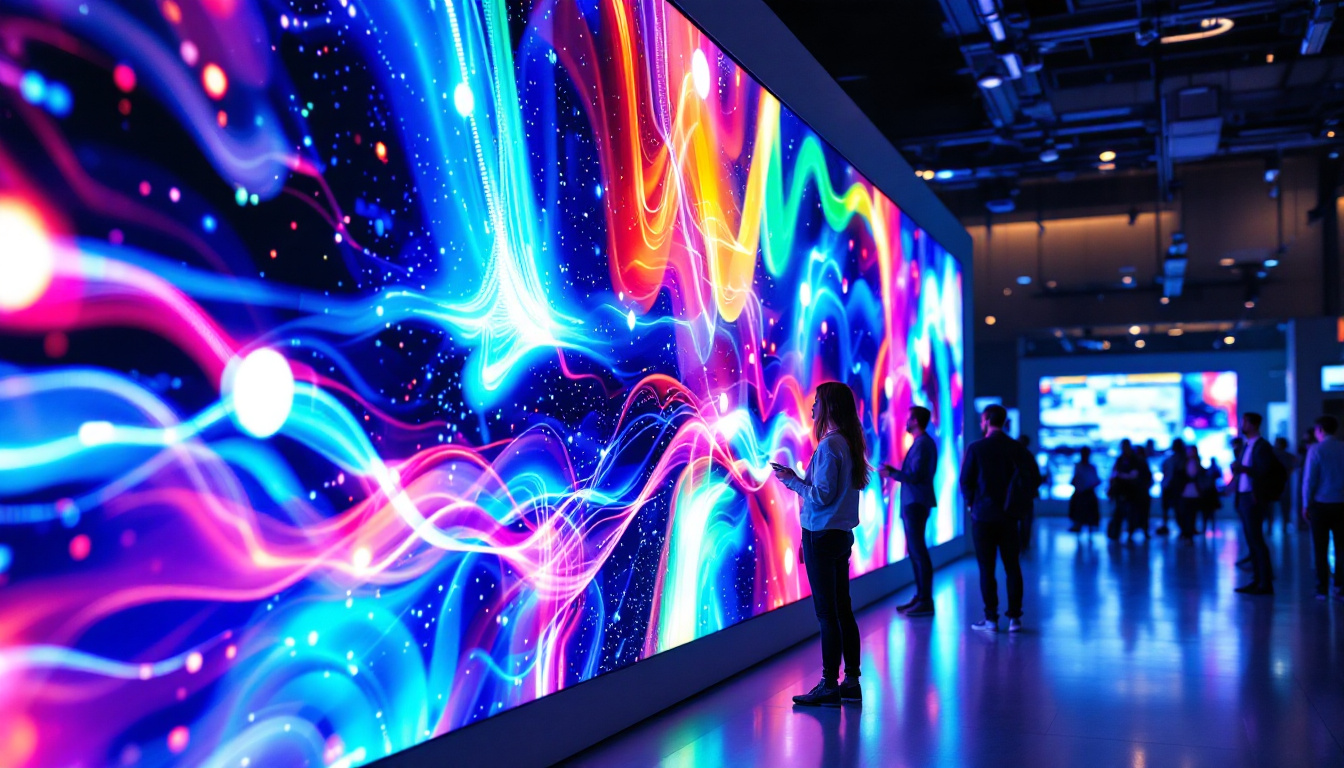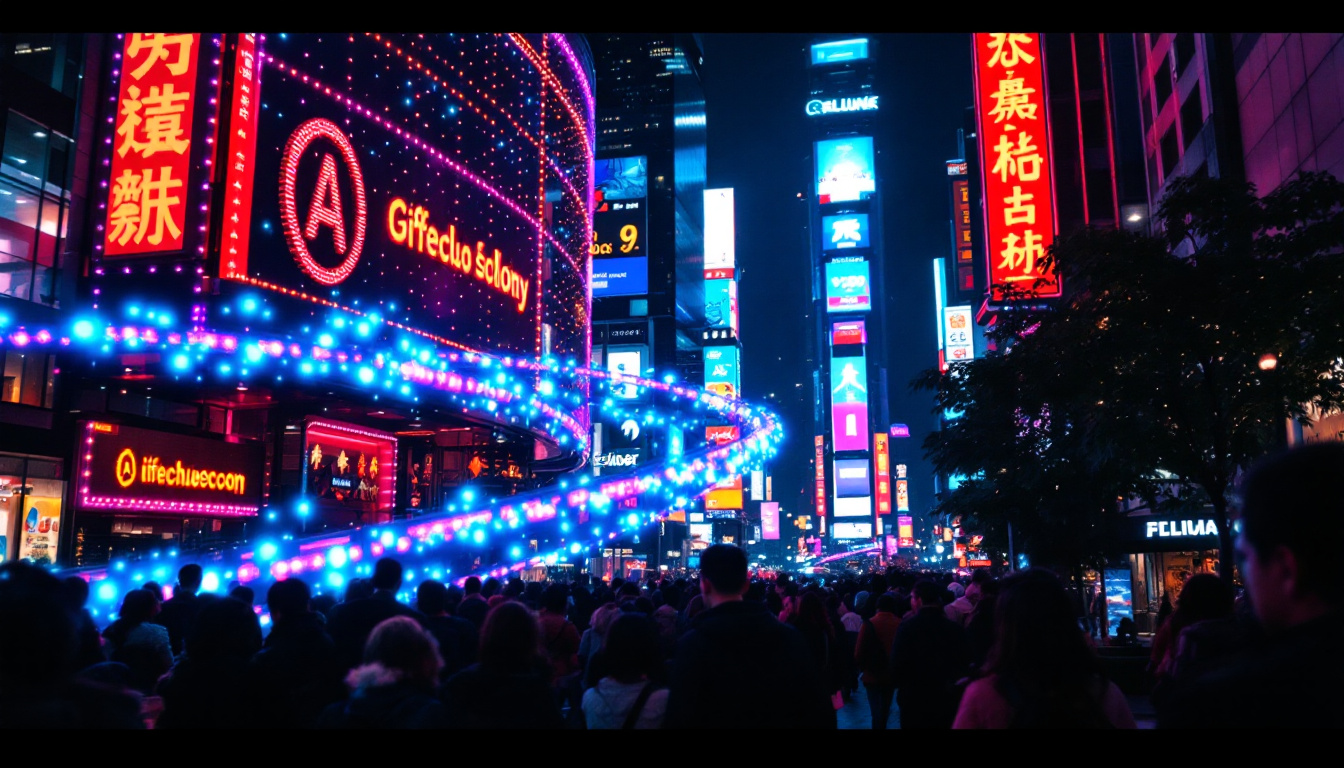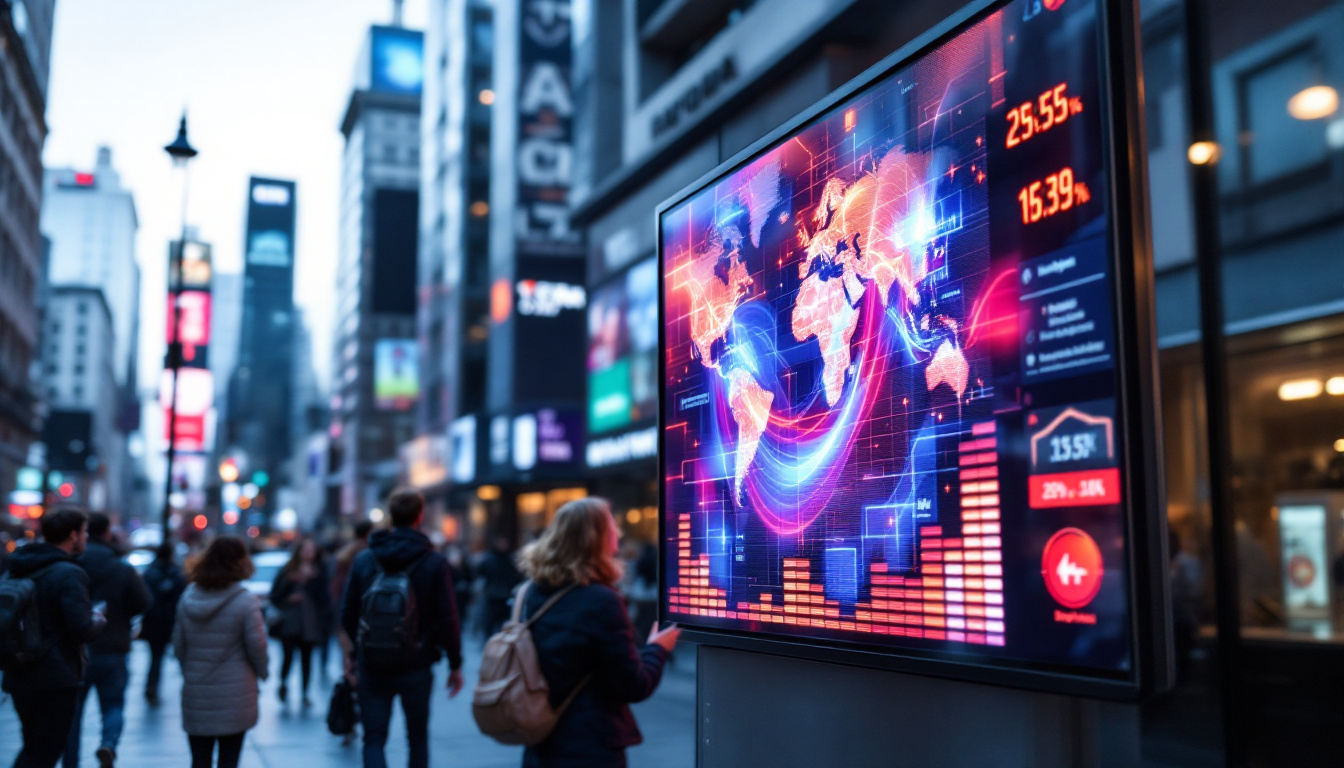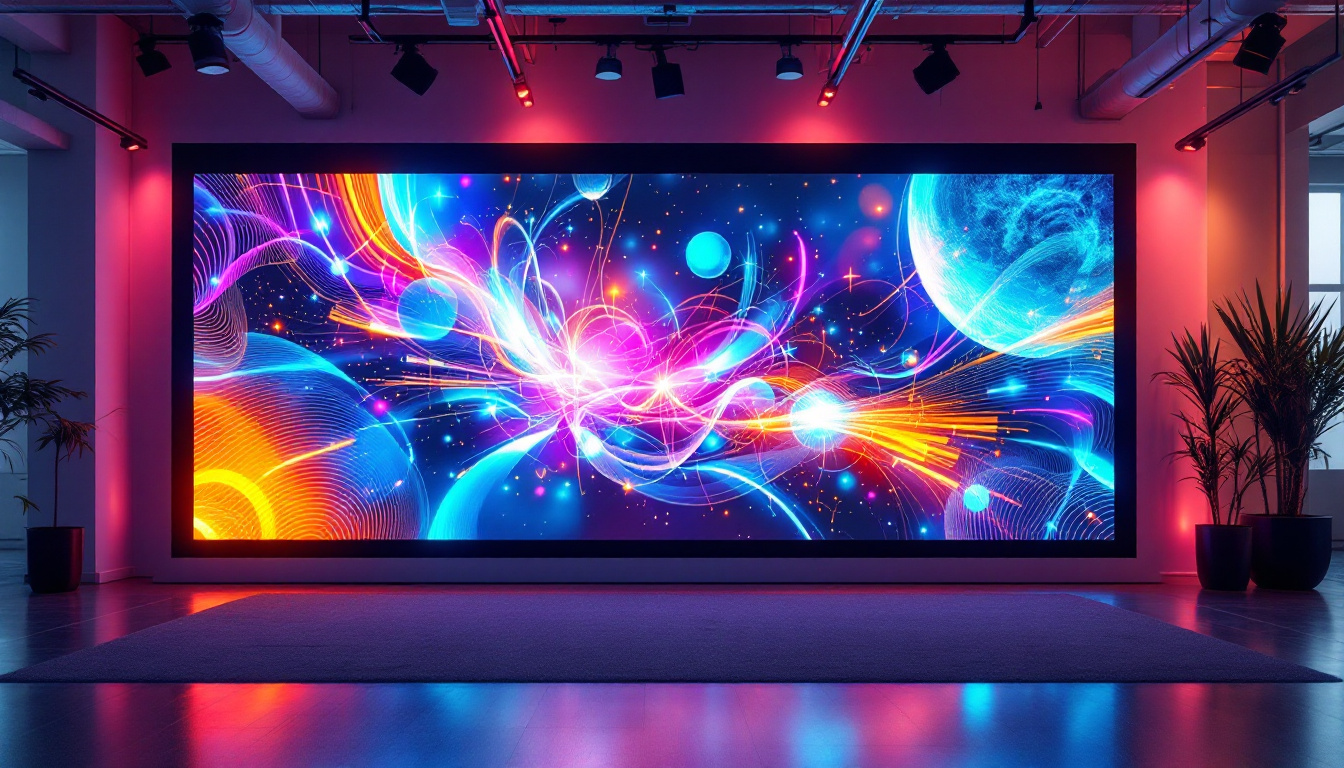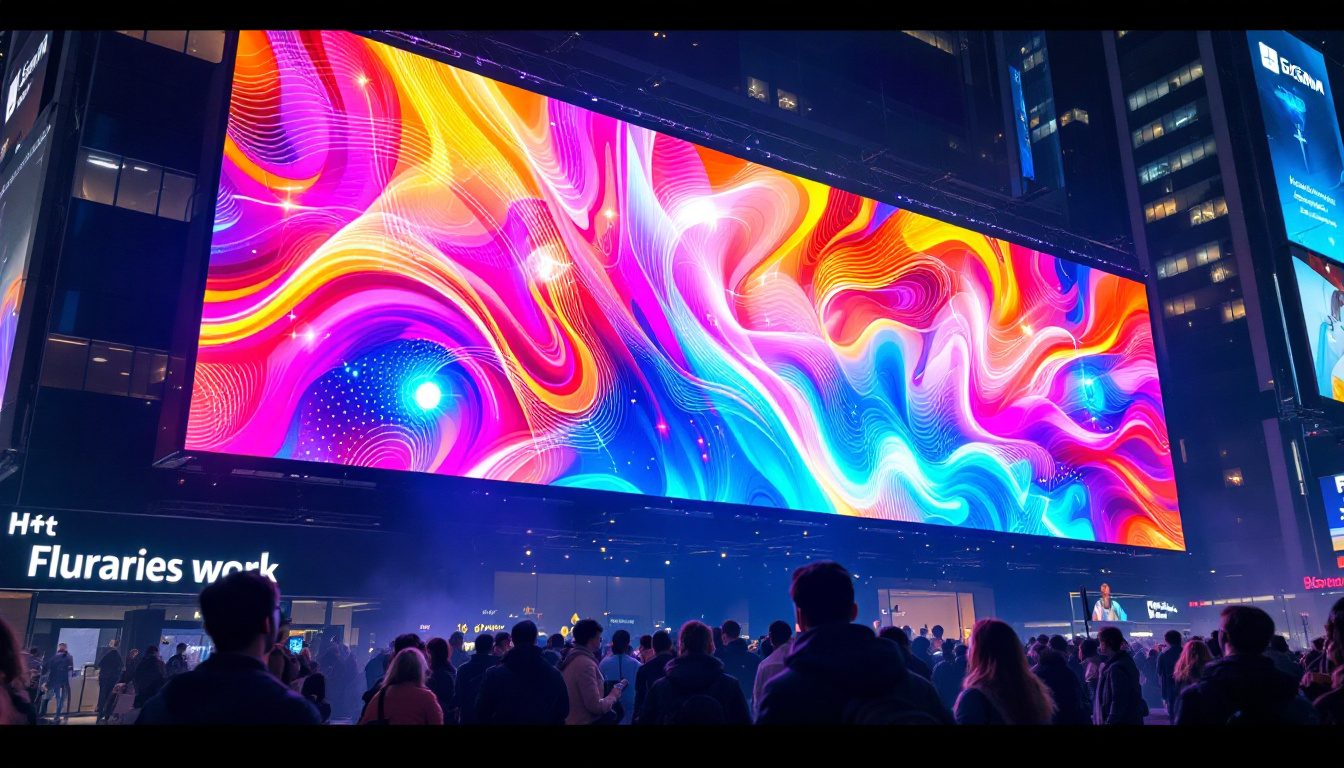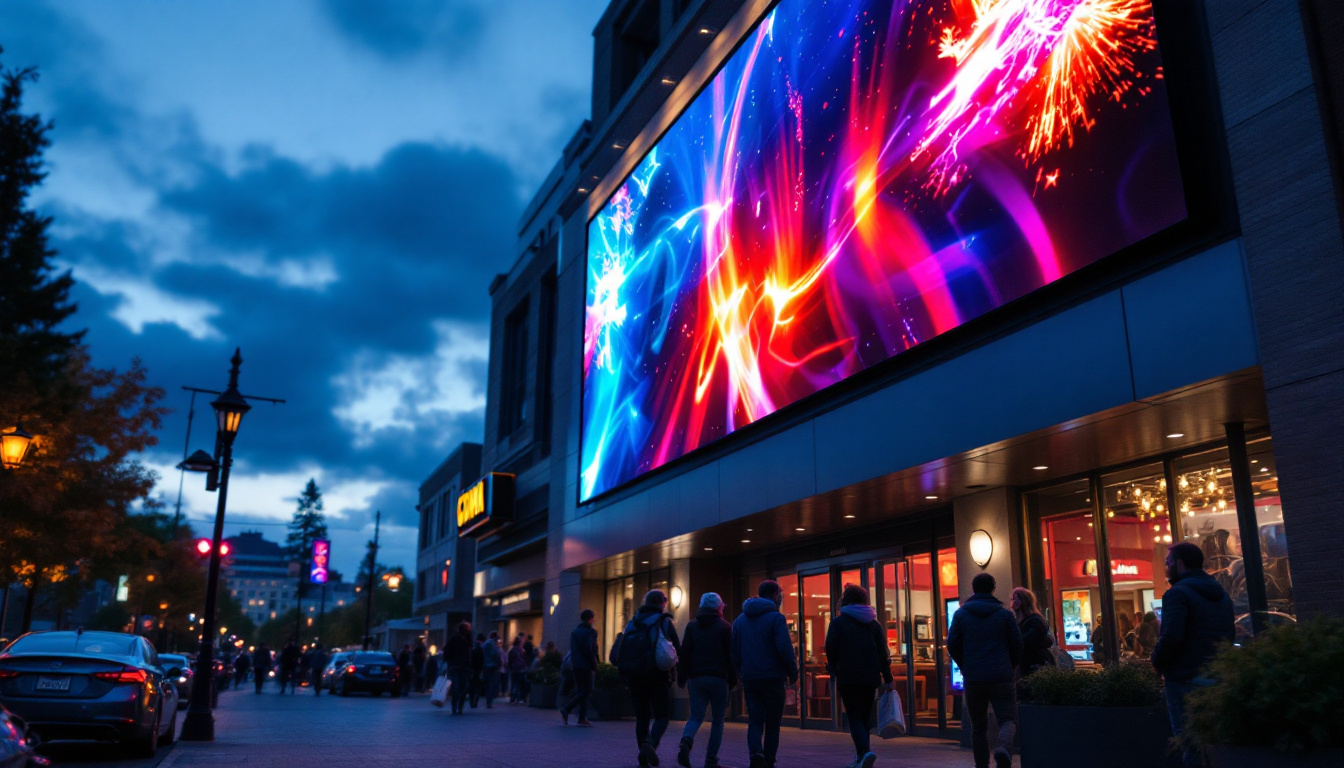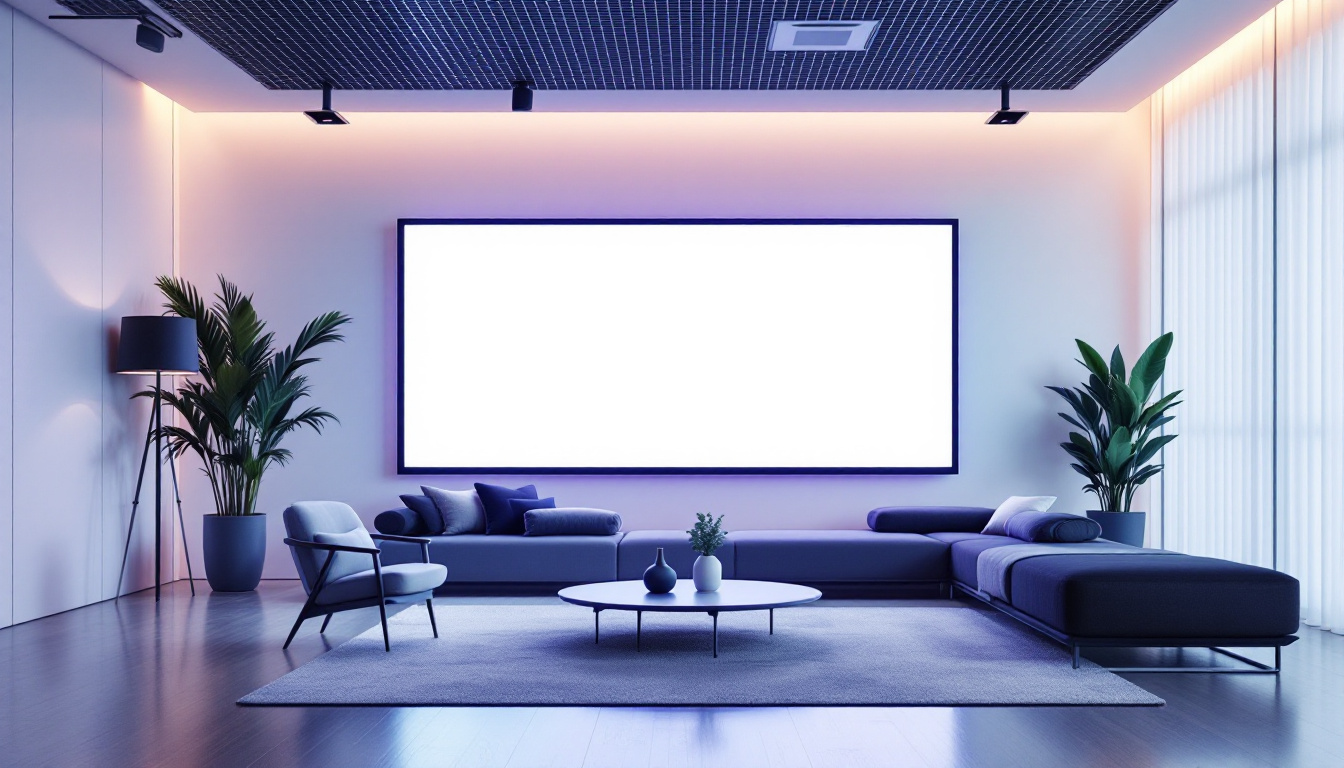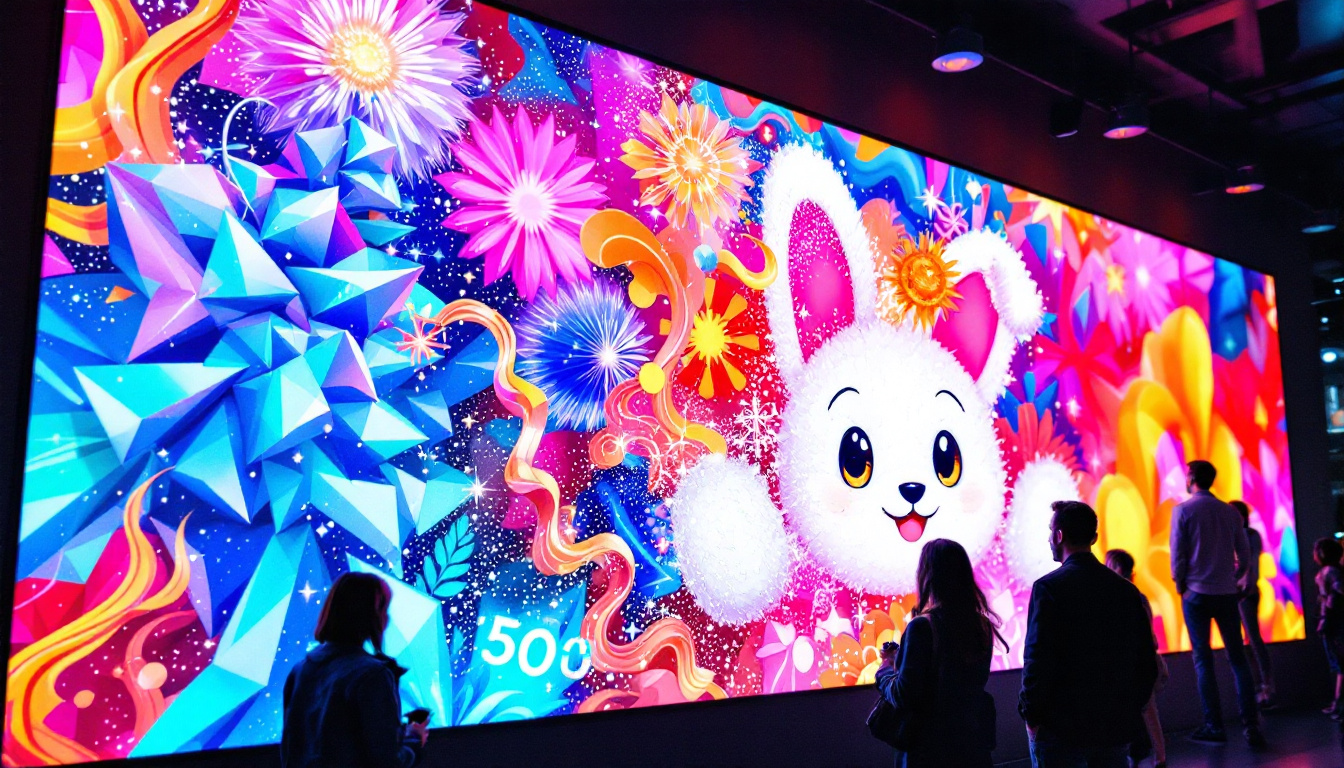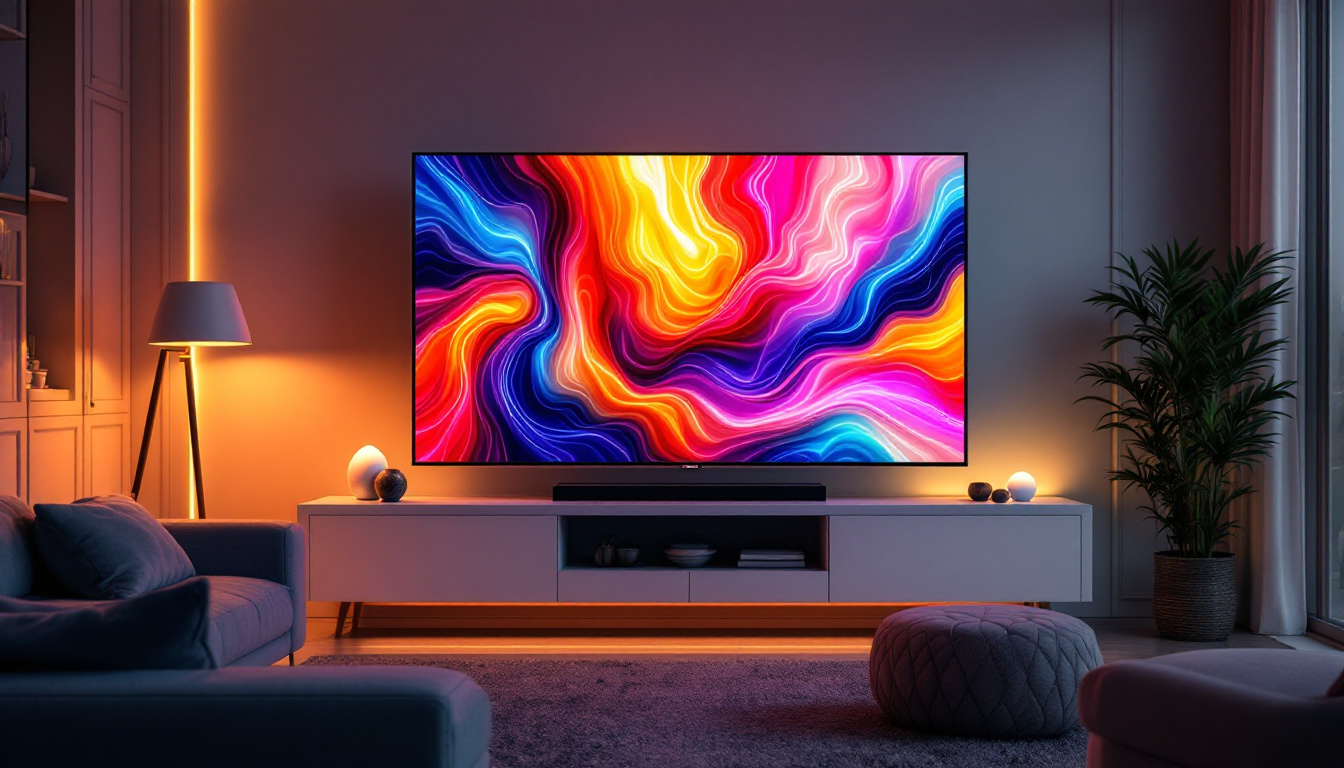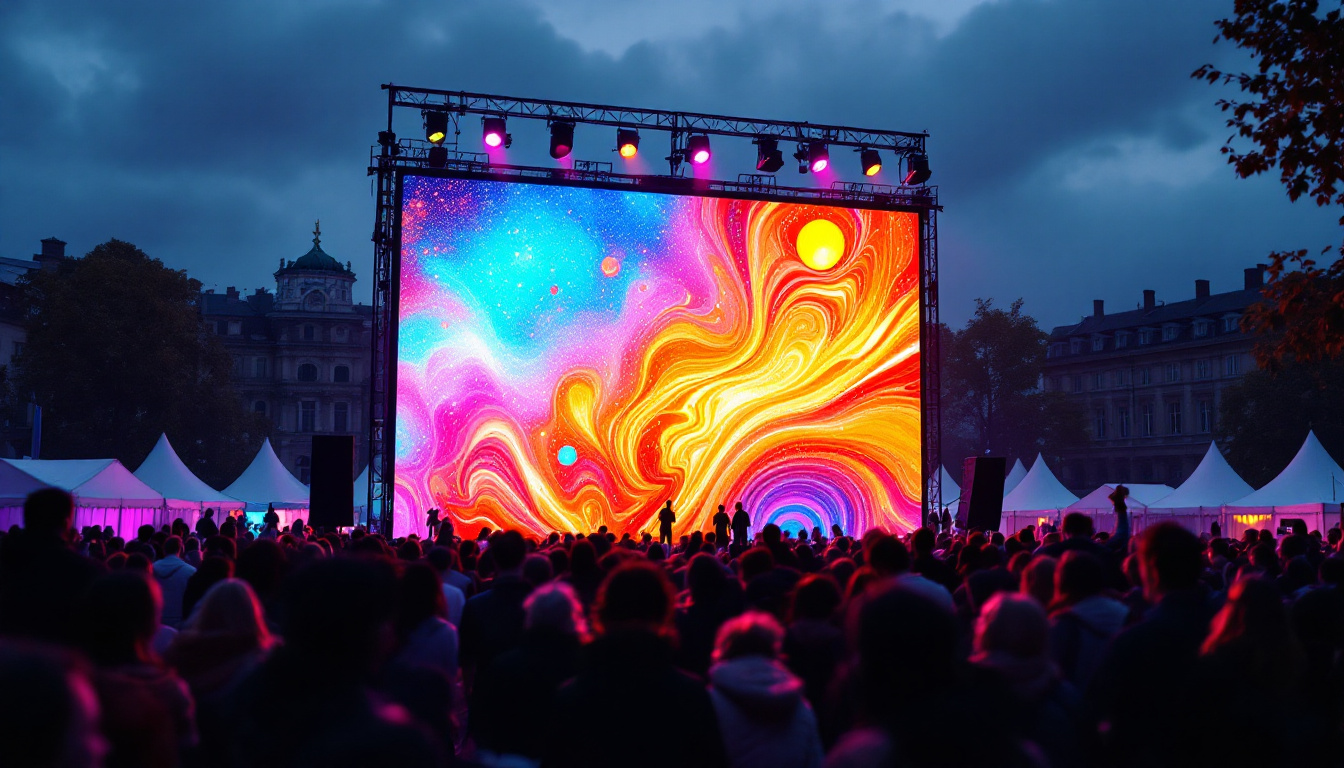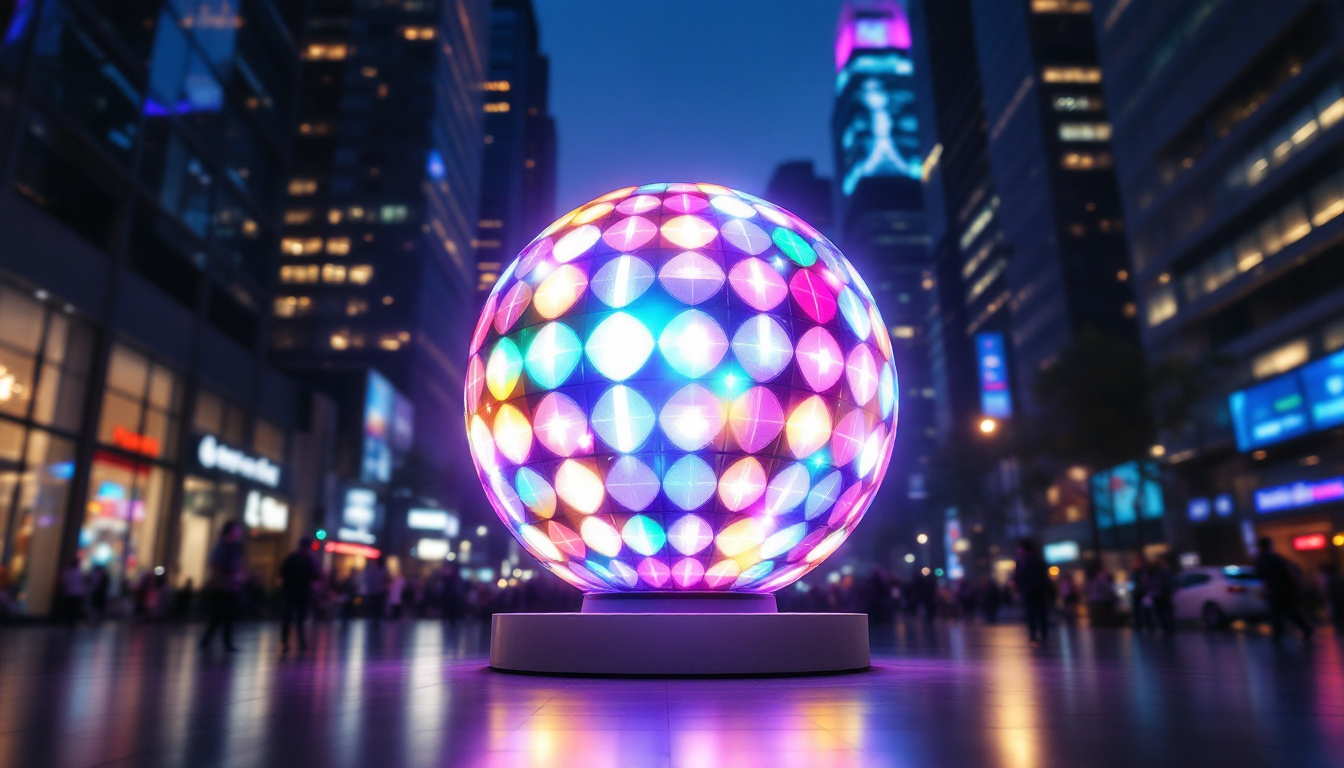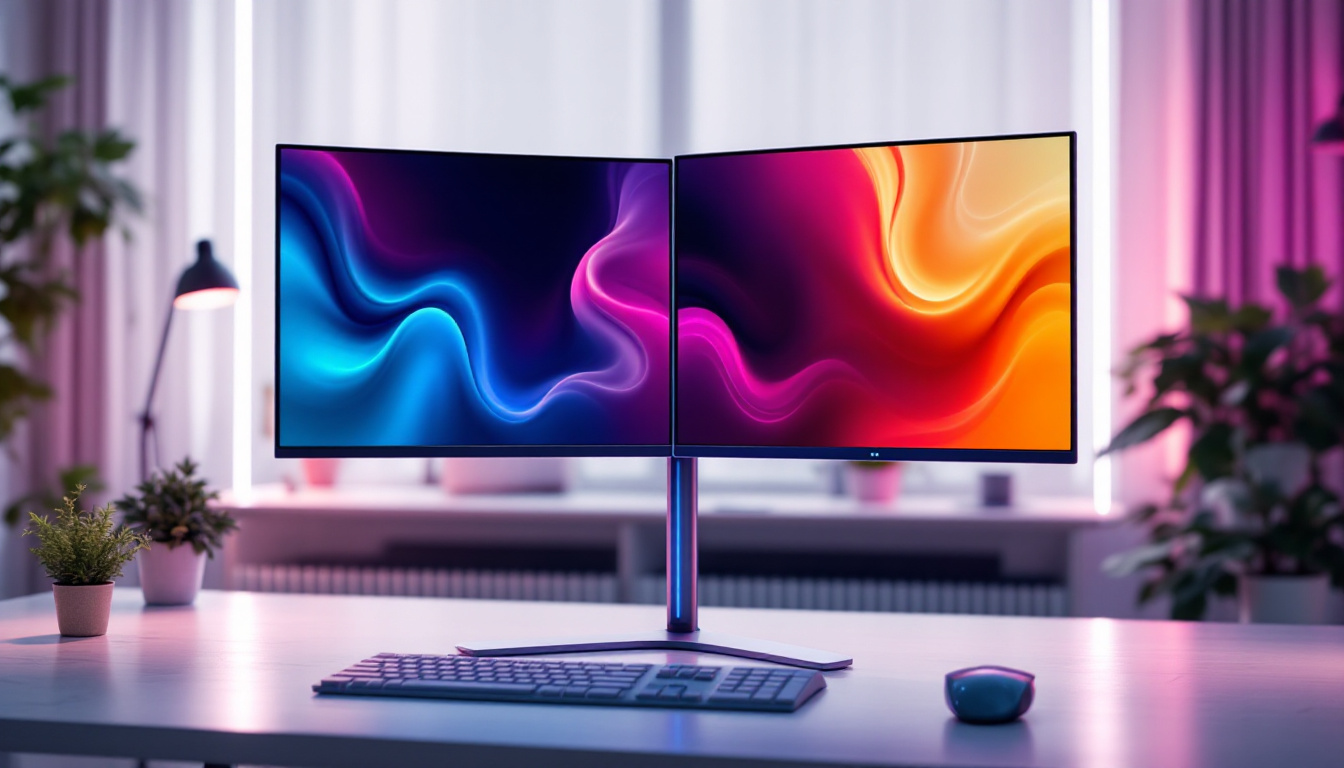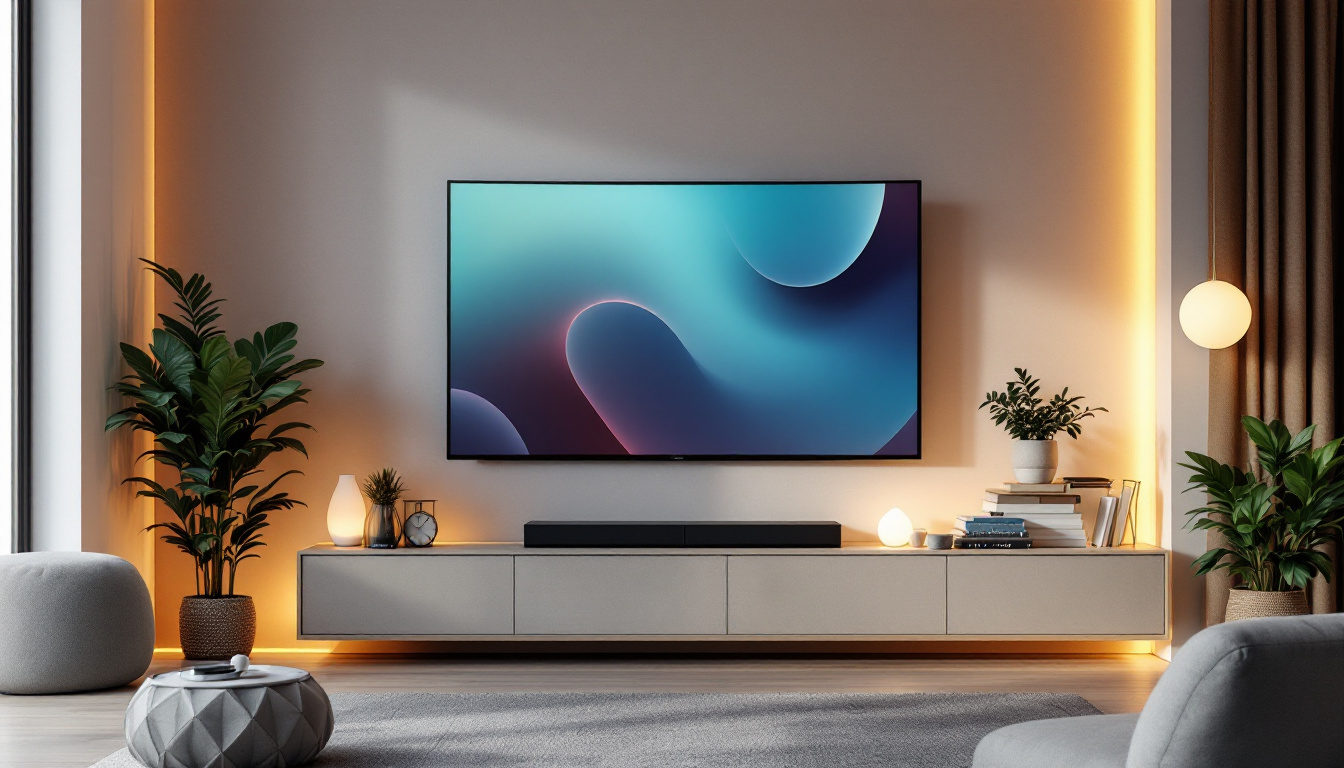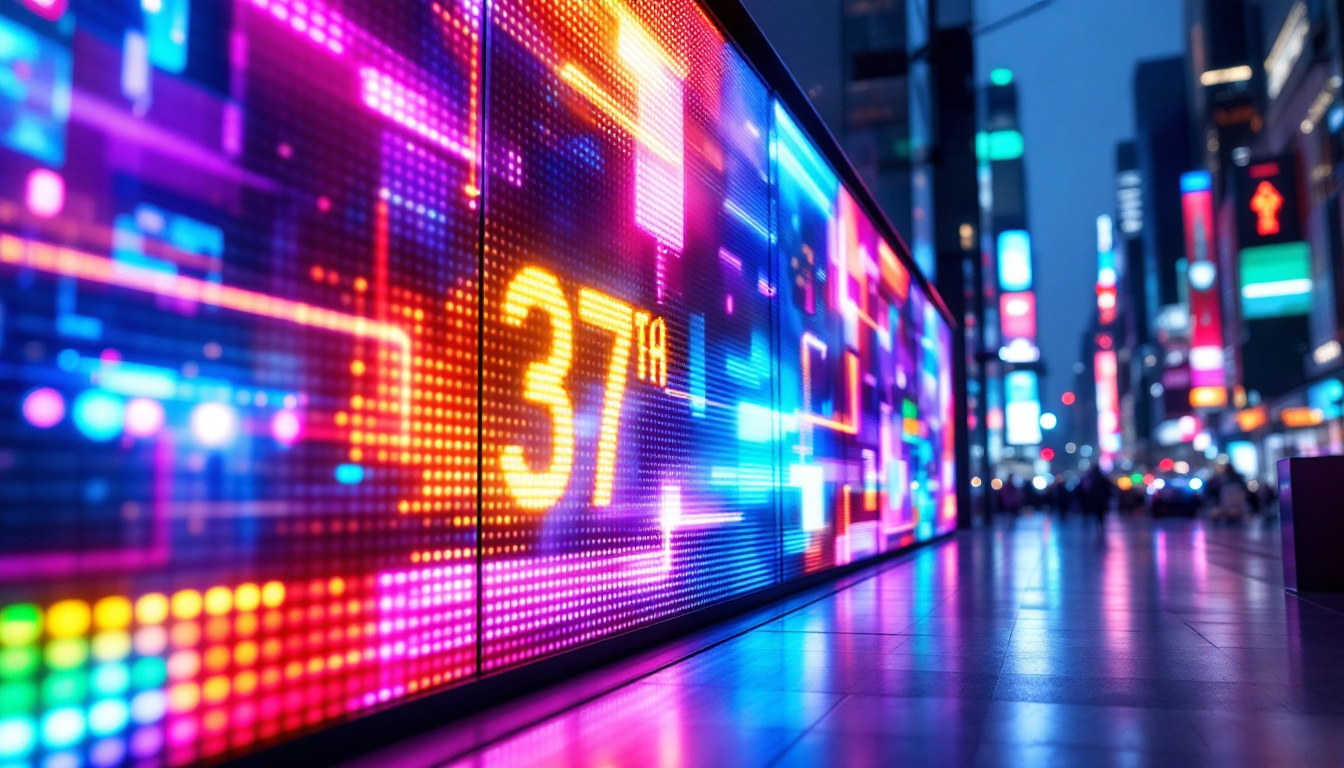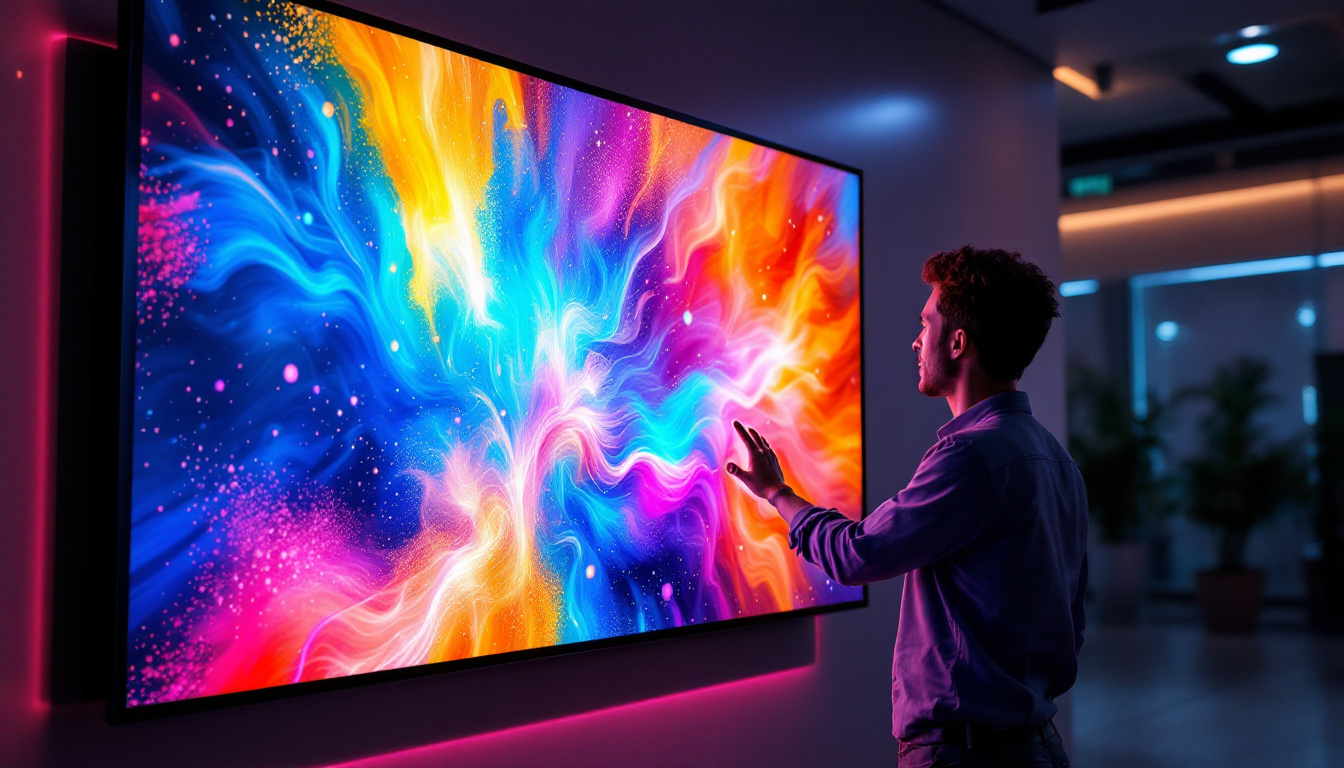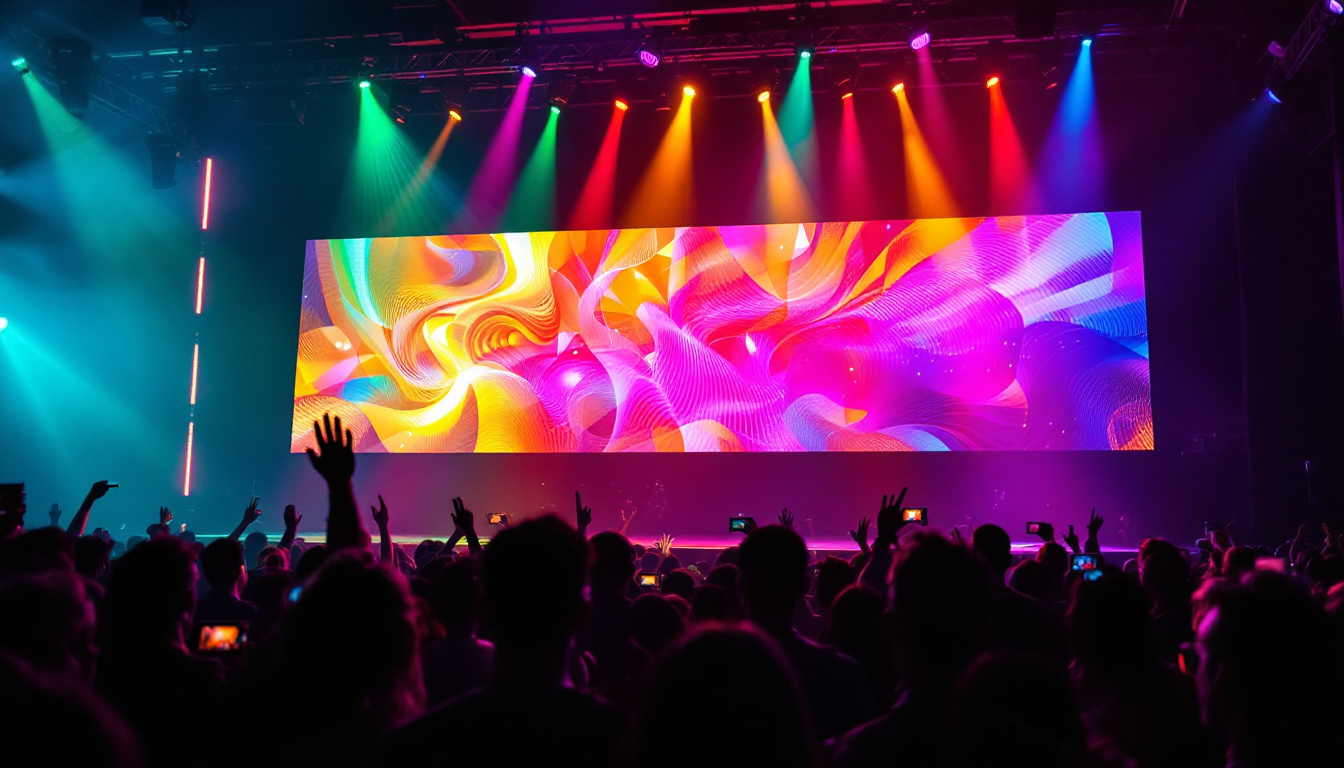Big LCD Screen: LED Display Explained
In the world of modern technology, the terms LCD and LED are often used interchangeably, leading to confusion among consumers. While both technologies are integral to the display industry, they have distinct characteristics and applications. This article delves into the intricacies of big LCD screens and LED displays, exploring their functionalities, advantages, and differences.
Understanding LCD Technology
Liquid Crystal Display (LCD) technology has revolutionized the way images are displayed on screens. It utilizes liquid crystals sandwiched between two layers of glass or plastic, which manipulate light to produce images. This technology is widely used in televisions, computer monitors, and mobile devices. The versatility and efficiency of LCDs have made them a staple in modern electronics, providing users with vibrant visuals and energy-efficient performance.
The Basics of LCD Operation
At its core, an LCD screen operates by filtering light through liquid crystals. When an electric current passes through these crystals, they change alignment, allowing varying amounts of light to pass through. This process creates the images seen on the screen. The backlighting, typically provided by fluorescent lamps or LEDs, illuminates the liquid crystals, making the display visible. The precision of this alignment is crucial, as even slight variations can lead to color inaccuracies or image distortion, which is why advancements in LCD technology have focused on improving the control mechanisms of these liquid crystals.
Types of LCD Displays
There are several types of LCD displays, each with unique features:
- Twisted Nematic (TN): Known for fast response times, TN panels are commonly used in gaming monitors. Their rapid pixel response makes them ideal for fast-paced gaming, although they often sacrifice color accuracy and viewing angles.
- In-Plane Switching (IPS): Offering better color reproduction and wider viewing angles, IPS panels are favored for professional graphic work. These displays maintain color consistency even when viewed from sharp angles, making them perfect for design and photography tasks.
- Vertical Alignment (VA): These panels provide superior contrast ratios, making them ideal for watching movies. VA panels excel in producing deep blacks and vibrant colors, enhancing the overall viewing experience, especially in darker environments.
In addition to these primary types, there are also variations like Advanced Fringe Field Switching (AFFS) and Super In-Plane Switching (S-IPS), which aim to combine the strengths of different technologies. AFFS, for instance, enhances the viewing angles and color performance of traditional IPS panels, making them even more suitable for high-end displays. As technology continues to evolve, manufacturers are constantly innovating to create LCDs that not only meet but exceed consumer expectations, leading to displays that are thinner, lighter, and more energy-efficient than ever before.
The Emergence of LED Technology
Light Emitting Diode (LED) technology has gained popularity as a display option, often marketed as an enhancement to traditional LCD screens. However, it’s essential to understand that LED displays are essentially LCDs with LED backlighting. This advancement has revolutionized the way we view digital content, offering not only improved brightness and color accuracy but also a more energy-efficient alternative that aligns with contemporary environmental standards.
How LED Displays Work
LED technology utilizes semiconductor diodes that emit light when an electric current passes through them. In LED displays, these diodes serve as the backlight for the LCD panel, providing a brighter and more energy-efficient display compared to traditional fluorescent backlighting. The ability of LEDs to turn on and off rapidly allows for dynamic contrast ratios, enhancing the viewing experience by making dark scenes appear more detailed and vibrant.
Types of LED Displays
LED displays can be categorized into several types based on their configuration:
- Edge-Lit LED: LEDs are placed along the edges of the screen, allowing for a thinner design. This configuration is particularly popular in ultra-slim TVs, making them aesthetically pleasing while still delivering decent picture quality.
- Full-Array LED: LEDs are distributed across the entire back of the screen, providing better uniformity and contrast. This type of display often features local dimming technology, which can enhance black levels by dimming specific areas of the screen while keeping others bright.
- OLED (Organic LED): Each pixel emits its own light, resulting in deeper blacks and vibrant colors. OLED technology has gained a strong following among enthusiasts for its ability to produce stunning images with exceptional color fidelity and viewing angles.
In addition to these primary types, there are also variations such as Mini-LED and MicroLED displays, which further push the boundaries of display technology. Mini-LED uses smaller LEDs for backlighting, allowing for more precise control over local dimming zones, while MicroLED represents a significant leap forward by utilizing microscopic LEDs that can create individual pixels without the need for a separate backlight. These innovations are paving the way for even more immersive viewing experiences, making LED technology a cornerstone of modern display solutions.
Comparing LCD and LED Displays
While both LCD and LED technologies serve the same purpose of displaying images, they differ significantly in performance, energy consumption, and visual quality. Understanding these differences can help consumers make informed decisions when purchasing a display.
Visual Quality
One of the most noticeable differences between LCD and LED displays is their visual quality. LED displays, particularly those using full-array backlighting or OLED technology, typically offer superior contrast ratios and color accuracy. This is due to the ability of LEDs to produce deeper blacks and brighter whites, enhancing the overall viewing experience.
Energy Efficiency
Energy efficiency is another critical factor to consider. LED displays consume less power than traditional LCDs with fluorescent backlighting. This not only reduces electricity bills but also contributes to a smaller carbon footprint, making LED a more environmentally friendly option.
Longevity and Durability
In terms of longevity, LED displays tend to have a longer lifespan compared to traditional LCDs. The absence of fragile fluorescent tubes in LED technology means fewer components that can fail over time. Additionally, many LED displays are designed to withstand harsher conditions, making them suitable for various environments.
Applications of Big LCD and LED Screens
Big LCD and LED screens are utilized in a myriad of applications, from home entertainment to professional environments. Understanding these applications can highlight the versatility of both technologies.
Home Entertainment
In home settings, big LCD and LED screens are primarily used for televisions and gaming monitors. With the advent of 4K and even 8K resolution, these displays provide an immersive viewing experience. Features such as HDR (High Dynamic Range) further enhance the quality of images, making them more vibrant and lifelike.
Commercial Use
In commercial environments, big displays serve various purposes, including advertising, information dissemination, and presentations. LED screens, in particular, are favored for digital signage due to their brightness and visibility in outdoor settings. Retailers and businesses often use large LED screens to attract attention and convey messages effectively.
Professional and Educational Settings
In professional and educational settings, large LCD and LED screens are utilized for presentations, video conferencing, and collaborative work. The clarity and detail offered by these displays enhance communication and information sharing, making them invaluable tools in modern workplaces and classrooms.
Future Trends in Display Technology
The display technology landscape is continuously evolving, with innovations aimed at improving performance and user experience. Some trends to watch for in the future include:
MicroLED Technology
MicroLED is an emerging technology that promises to combine the best features of LCD and OLED displays. It utilizes tiny, self-emitting LEDs to create images, offering high brightness, excellent color accuracy, and deep blacks. MicroLED displays are expected to be more energy-efficient and longer-lasting than current technologies.
Flexible Displays
Flexible display technology is gaining traction, allowing screens to bend and curve without compromising image quality. This innovation opens up new possibilities for product design, enabling manufacturers to create unique and versatile devices, from smartphones to large-scale displays.
Augmented and Virtual Reality
As augmented reality (AR) and virtual reality (VR) technologies advance, the demand for high-quality displays will increase. Future displays will need to provide higher resolutions, faster refresh rates, and wider fields of view to create immersive experiences that engage users fully.
Choosing the Right Display for Your Needs
When selecting a big LCD or LED screen, several factors should be considered to ensure the best fit for individual needs and preferences. Understanding these factors can simplify the decision-making process.
Screen Size and Resolution
The size of the screen and its resolution are crucial factors. Larger screens provide a more immersive experience, particularly for home theaters or gaming setups. Additionally, higher resolutions, such as 4K or 8K, offer sharper images and finer details, enhancing the overall viewing experience.
Viewing Distance
Viewing distance is another important consideration. The ideal distance from which to view a screen varies based on its size and resolution. For instance, a 4K display can be viewed closer than a 1080p display without noticeable pixelation, allowing for a more engaging experience.
Budget and Brand Preferences
Lastly, budget and brand preferences play a significant role in the decision-making process. While premium brands may offer advanced features and better build quality, there are also many mid-range options that provide excellent value for money. Researching different brands and models can help identify the best options within a specific budget.
Conclusion
Big LCD and LED displays have transformed the way visual information is presented, offering a range of applications across various sectors. Understanding the differences between these technologies, their advantages, and their applications can empower consumers to make informed choices. As technology continues to evolve, staying abreast of the latest trends will ensure that users can enjoy the best viewing experiences available.
Whether for home entertainment, professional use, or educational purposes, the right display can significantly enhance the quality of visual content. With advancements in technology, the future of big screens promises even more exciting developments, making it an exhilarating time to be a part of the display revolution.
Discover LumenMatrix’s Innovative LED Display Solutions
Ready to elevate your visual experience with the latest in display technology? Look no further than LumenMatrix, a pioneer in LED display innovation. From captivating Indoor and Outdoor LED Wall Displays to dynamic Vehicle and Sports LED Displays, LumenMatrix offers a comprehensive range of solutions tailored to your needs. Whether you’re looking to enhance brand visibility, create immersive environments, or communicate with impact, our cutting-edge LED displays are designed to captivate and engage. Check out LumenMatrix LED Display Solutions today and join the visual revolution with clarity and creativity at the forefront.

